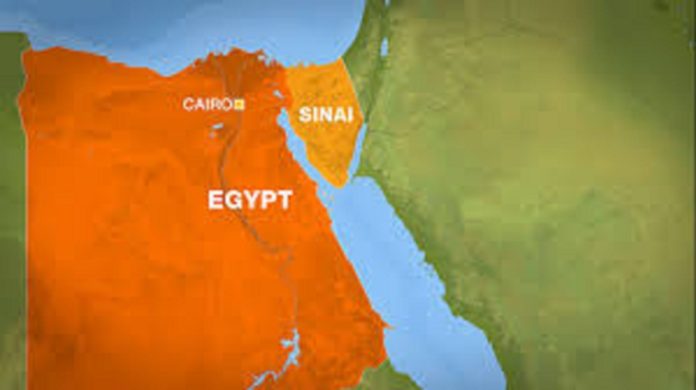In March 2016 president Abdel Fattah El-Sisi said to Amr Adib (a famous TV host) in an on air phone call on his show that the government of Egypt has allocated 10 Billion Egyptian pounds to develop Sinai and that in 18 months from that date the Egyptian people will see a fully developed area in Sinai, starting with a creation of a 1,500-kilometer network of roads and bridges, the development of main axes and the building of Bedouin compounds, each comprising 150 houses and 500 agricultural acres.
“Heed my words, Egyptians, what I am telling you is the truth. In a year and a half, the project will be implemented without one day of delay. I am capable of doing so, God willing.
” On the 23rd of Dec 2017, he inaugurated several development projects in the East Suez Canal development zone in northern Ismailia, including completion of 2 tunnels’ drilling and a creation of two floating bridges to facilitate commercial and civilian access to Sinai and the East Suez Canal Development Zone.
This inauguration witnessed the completion of drilling a 5,820 meters length tunnel in northern Ismailia – connecting Egypt’s northwestern city of Slalom to the vital North Sinai Al-Awja road and another 3,920 meters-long tunnel that connects Slalom to North Sinai’s Rafah as stated by Ahmed Fouda, the deputy head of the Armed Forces’ engineering authority that is overseeing the project as published in Al Ahram newspaper. The two tunnels are part of a mega 6 tunnel project, a fresh water tunnel and two floating tunnels connecting Sinai to Delta. The aim is to strengthen and consolidate Egypt’s agricultural policy by increasing the area of cultivated lands and agricultural production, as well as providing more labor access for mining, industrial and trading zones currently being developed East of the Suez Canal, conducting a redistribution of population and resettlement of citizens in the desert of Egypt. This inauguration also included the second phase of the 3828 tanks’ aquafarms project that was built on 5000 feddans east of Suez Canal in 2015. This 30th of June revolution development policy came following opinions against the state’s institutions for what some have called obvious “neglect” of Sinai during Mubarak and Morsi’s times that may have contributed to the increase of the Islamic terrorism phenomena in the area.
In 2014 the Saban Center for Middle East Policy at Brookings published an analysis paper titled “The Sinai Peninsula threat development and response concept” in which it concluded: “it is imperative to address the long standing economic marginalisation and systemic discrimination of the Sinai Bedouin. Over the past decade, under both Mubarak and Morsi, harsh repressive military crackdowns have failed to curb the terrorist threat in the peninsula. On the contrary, these draconian responses have fuelled extremism among the Bedouin, and have created an environment ripe for Islamist organisations to exploit to their own advantage. During his one year in office, President Morsi’s approach to dealing with the Sinai Bedouin waffled between attempting dialogue with the Bedouin community and ordering a military crackdown. Ultimately many of his promises to improve the living standards of the Bedouin—including steps to facilitate their inclusion in Egyptian society and implementing new development projects – failed to materialise.”
The authors added: “Egypt’s political future, the need to address the challenges in the Sinai provides an opportunity for the involvement of the international community, and countries that have a stake in restoring security in the Sinai Peninsula should play an active role. The United States in particular, has a vested interest in curbing the growing terrorist threat in the Sinai, given its financial and personnel investment in the MFO, and its stated policy of protecting the security of Israel. In the past, the U.S. has demonstrated a willingness to invest in development aid in the Sinai, but often these offers were refused by the Egyptian government (while some are still waiting to be acknowledged). An initial investment—between $2 and $3 billion dollars—that could be put towards development projects in the region in the areas of land rights, water, jobs, education, municipal institutions and necessary infrastructure, could serve as an initial step in getting such a program off the ground and begin the long-term policy of improving the socio-economic status of the Sinai Bedouin, thus diminishing their growing extremism.” The bottom line now is that the Egyptian government has demonstrated its commitment and delivery (within the boundaries of its current resources) and it remains to be seen if the International community is willing to show solidarity to fix a problem they also are paying a heavy price for.
